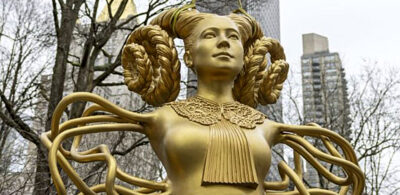Thomas J Price, Grounded in the Stars
You might be dismayed to learn that many contemporary statue makers are cheaters when it comes to fashioning sculptures from bronze or marble. Even individuals involved in the arts might be shocked to discover that present-day “sculptors” have never touched clay or marble, let along cast a statue in bronze.
I believe that’s the case with Grounded in the Stars, a 12-foot tall bronze statue from postmodern artist Thomas J Price. It stands before the public in New York City’s Times Square as a collaborative effort between Mr. Price and the Times Square Arts organization.
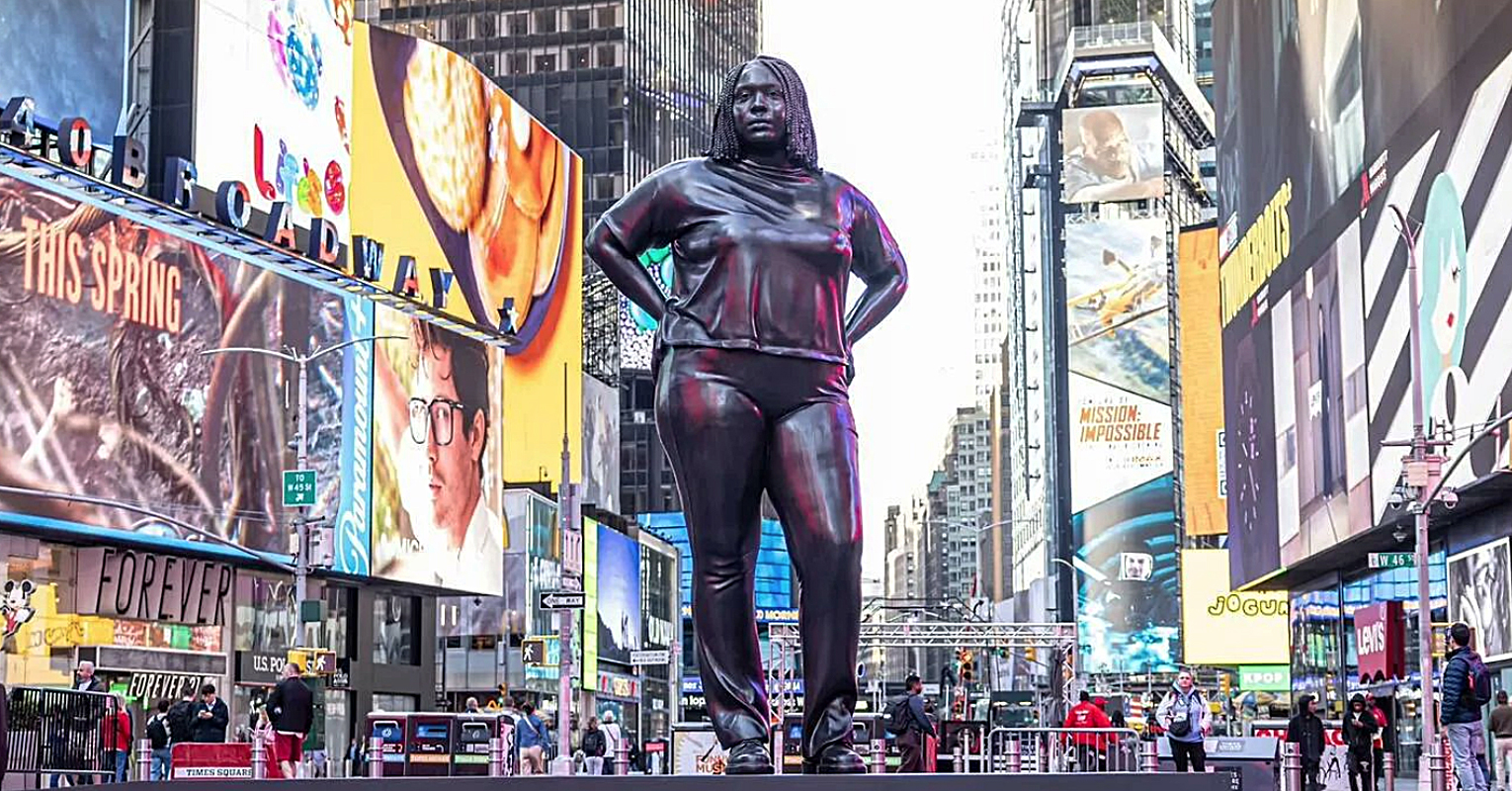
When browsing a 2019 interview with Price published by the Ocula website and titled Reframing Classical Sculpture, I came across an item that revealed how Price produces a sculpture. I’ll quote the article here;
“… a range of techniques from gilding and lost-wax processes to more contemporary methods like 3D printing. His sculpted figures comprise features from several persons, synthesized into composite characters who look past us with impassive expressions that belie the complexity of human psychology.”
Ocula unequivocally stated Price uses 3D printing to produce sculptures. In all likelihood Grounded was the result of 3D technologies, circumstantial evidence points to this. If Price didn’t use 3D printing to make Grounded… then which of his statues did it manufacture?

The “moderns” have tossed a thousand years of knowledge away to produce sculptures by way of digital technology. Our present is the epoch of Artificial Intelligence (AI), with an emphasis on artificial. This isn’t progress… its erasure.
Forget ancient Egypt’s bronze statues, the famous bronze or marble statuary of Classical Greece, the bronze sculptures of the African Kingdom of Benin, and the marble and bronze masterworks of Renaissance Europe. Today all statues from those distinct periods in time can be easily replicated with 3D scanning and printing. Shall we call them “replicants”?
Don’t make the mistake of thinking only lowbrow chotskis are being 3D scanned and printed. The encroachment of AI on the fine art world is real and ominous. The Smithsonian demonstrated this in 2015 when it produced a 3D printed replica of the 1843 marble sculpture The Greek Slave by American sculpture Hiram Powers.
The Smithsonian museum printed Powers’ statue using glass filled polymer, and acknowledged the replica was created by 3D technologies. Still, today’s sculptors are deceitfully silent when it comes to their statues being created by 3D printing. The SCANSITE company has also shown that 3D technologies can create seemingly flawless replicas of Michelangelo’s masterworks.
Even 60 Minutes, the “news magazine” broadcast by the CBS television news distortion network, featured a segment on Nov 11, 2024 titled: “Robots sculpt marble in Italy, sparking worries about future of art form.” It was a report on a computerized robotic chisel machine that’s programed with 3D software. Called Robotor, it can carve a detailed marble statue in a matter of hours, instead of months or years of handwork.
The 60 Minutes report featured talks with Giacomo Massari, the co-founder of Robotor. Showing its ability to distort facts, 60 Minutes referred to Giacomo as “Jo” and Robotor as “Robo.” The program also featured chats with two Americans, a sculptor from New York City named Barry X Ball, and Richard Erdman, a Vermont based sculptor that creates abstract sculptures. Both rely on Robotor to manufacture sculptures. Naturally, all three spoke of the robotic chisel machine as if it were the greatest thing since sliced bread.
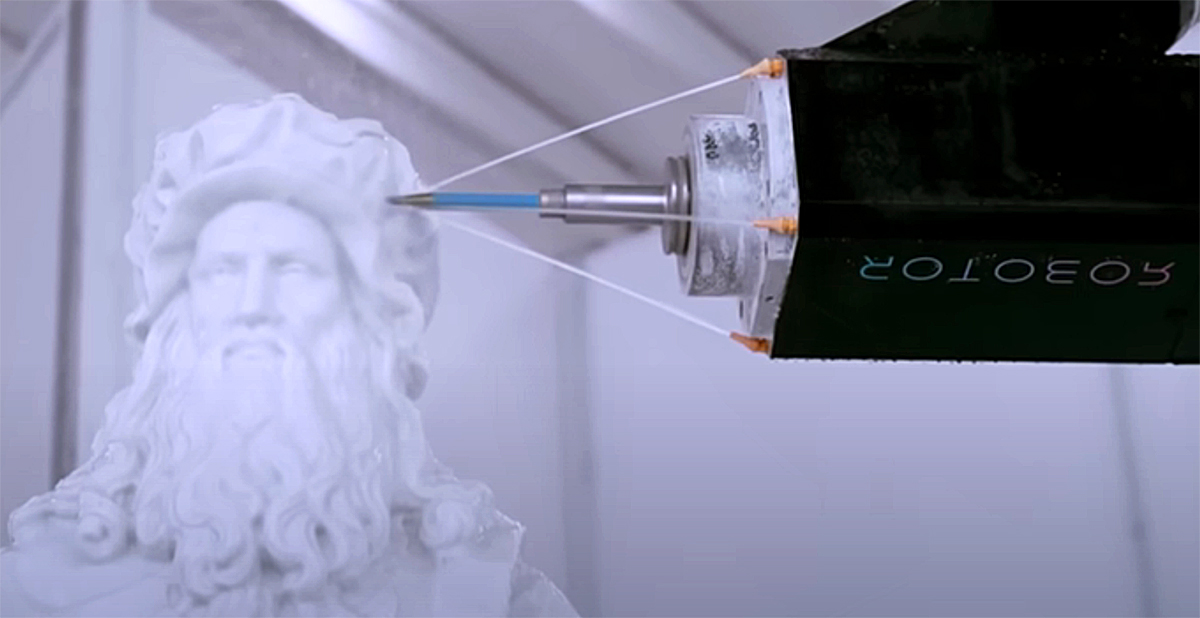
Any true artist, or devotee of the arts, should be terrified of the footage 60 Minutes televised that showed Robotor carving a life-sized, High Renaissance style, Carrara marble statue of Leonardo da Vinci. Robotor is not an innovative generator that expands an artist’s capabilities, it’s a hostile AI dynamo of destruction that will carve up and dismember the art of Western Civilization.
In this essay I hope to expose the accelerating trend of using 3D technologies to produce fine art sculptures. I oppose this negation of traditional sculpture, just as I reject the computerized AI Image Generators that instantly fabricate art in any style or medium after receiving a text prompt. You’ve seen AI generated art, it’s everywhere. It’s a curse that is obliterating the age old, noble profession of being an Illustrator, and AI generated art is about to seize the fine arts.
Art springs from the human soul, it is guided by intellect and passions, spurred by life experience, compelled by spirituality, and shaped by human hands. It is not the work of machines.
Grounded in the Stars is located on Duffy Square, the northern triangle of Manhattan’s Times Square. The sculpture has drawn a good deal of media praise and over-glorification. But among the public some say it depicts the Attorney General of New York, Letitia James. I’m afraid that isn’t the case.
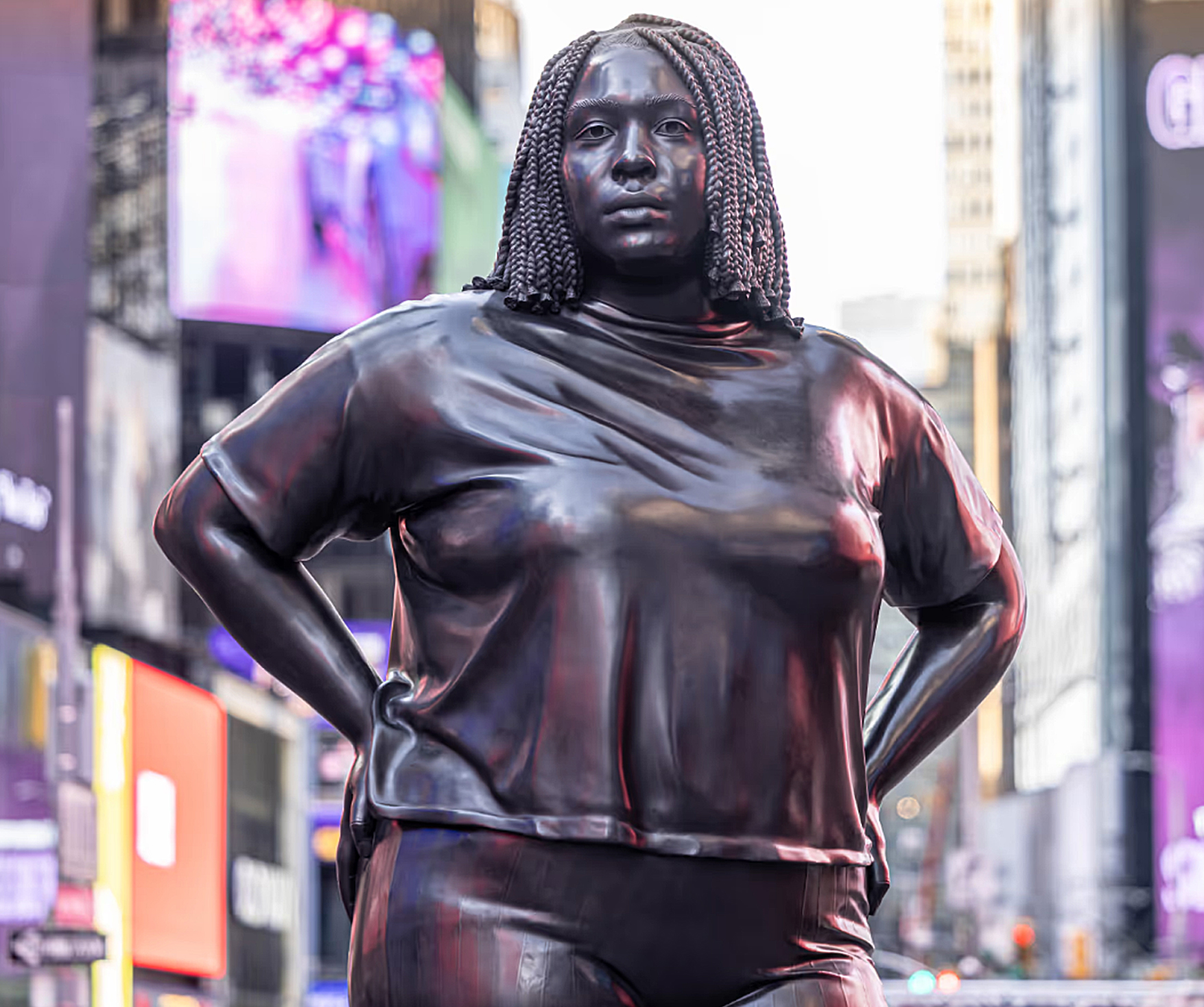
According to Price his bronze of an overplump female is “a fictionalized character constructed from images, observations, and open calls spanning between Los Angeles and London.” Combine those words with the remark from Ocula: “his sculpted figures comprise features from several persons, synthesized into composite characters.” Sounds like Price likes Photoshop, or a similar image editing application, but I suspect his “contemporary methods” go much further.
Photogrammetry uses high-resolution 360 degree photo scans of a physical object, to translated that information into a detailed 3D model, or “map.” Then 3D sculpting software is used to clean up the model, and finally a 3D printer publishes a realistic physical reproduction of the model. 3D printers can print in metal, plastic, resin, or other materials.
But there’s a catch. 3D printers also create molds for casting bronze using the lost wax process. This gives anyone with a 3D scanner and printer, the ability to manufacture precisely detailed bronze sculptures. Artists are no longer required, they will be replaced by technicians. For obvious reasons modern sculptors never mention photogrammetry.
Still, it’s important to draw attention to the fact that 3D sculptures aren’t produced by human hands, but by machines—it’s a convenience not a discipline. The lost wax method of creating sculpture stretches back to 4,200 BC, some of the greatest art treasures in the world were made using that process. Sculpture made by human hands will disappear under a tsunami of machine made art.
Thomas J Price is a 44-year-old British artist and a rising star in the postmodern art world, as well he might be with his Afro-centric, post-colonial, politically correct bona fides. However, I challenge the claim that he’s a virtuoso artist that creates masterful portrait bronze sculptures.
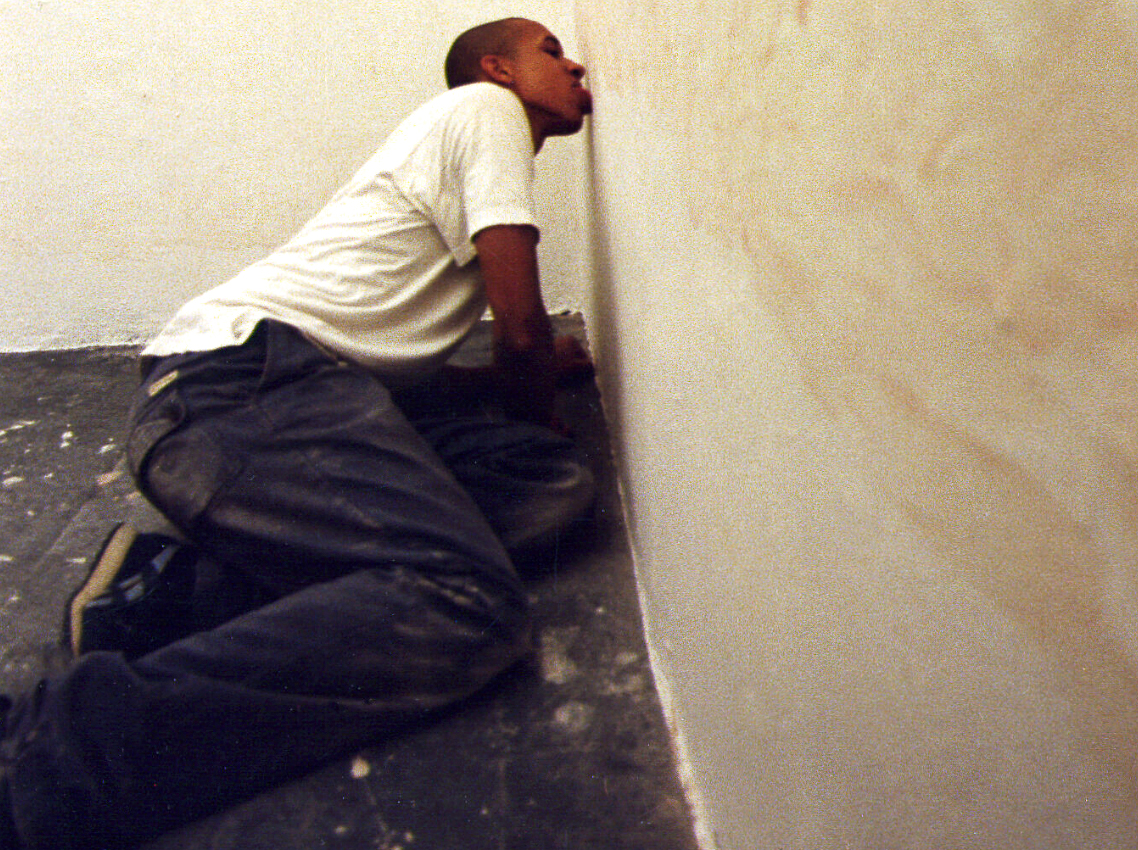
The “art practice” of Mr. Price is rigorously postmodern. In 2001 he produced a performance piece he titled Licked, in which he licked the walls of an exhibition space for three days. In doing so his tongue bled, allowing him to make a sanguineous “painting” on the wall. This was surely his magnum opus. Price posted a video of his masterwork on his website. Licked isn’t an aberration, it’s an example of what passes for art in today’s world.
Astonishingly, the postmodern maestro that is Thomas J Price, outdid himself when he made his simulacrum bronze, Grounded in the Stars. Yet, it simply must be asked—can a postmodern like Price, known for licking the walls of a gallery as a performance art piece, possess the superior skills necessary to become a master realist sculptor? I would hazard to say the answer is “no.”
The stunning arrogance of the Times Square Arts organization came to the fore when it released a statement regarding Grounded in the Stars on its official website. The following comment was included:
“In her depiction, one recognizes a shared humanity, yet the contrapposto pose of her body and the ease of her stance is a subtle nod to Michelangelo’s David. Through scale, materiality, and posture, Grounded in the Stars disrupts traditional ideas around what defines a triumphant figure and challenges who should be rendered immortal through monumentalization.”
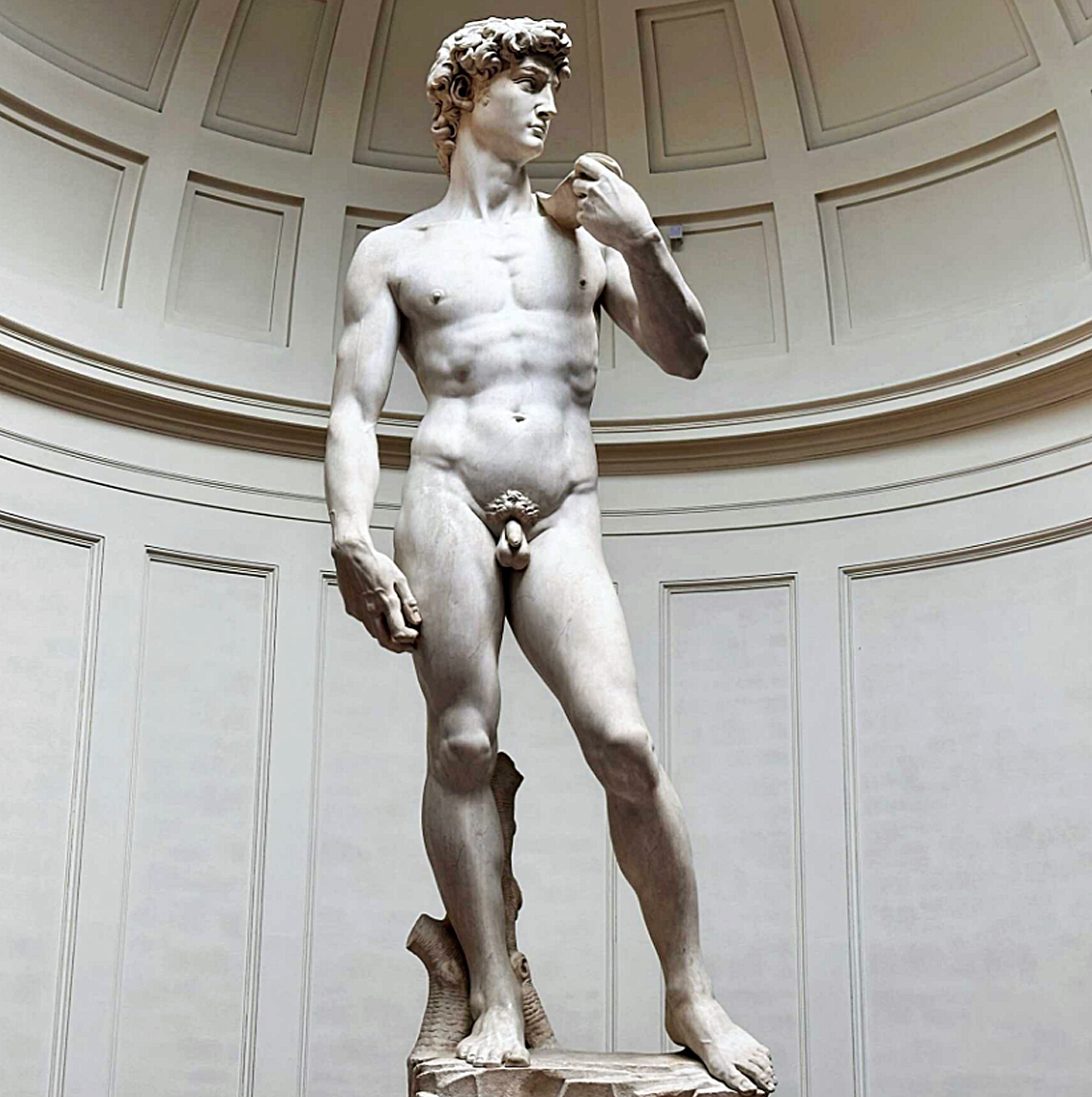
That statement is ridiculous for a number of reasons, though the Price sculpture is undoubtedly disruptive. But to compare his statue to the transcendental works of Michelangelo—the Italian High Renaissance sculptor, painter, and architect, is a crime against art. If the Times Square Arts organization wants to compare—in any way, Grounded in the Stars to Michelangelo’s David, then fine, let the public remarks fly! Just a word of advice… don’t place your bets on Thomas J Price.
And what’s all this nonsense about “who should be rendered immortal through monumentalization.” Let’s closely examine the facts. The Times Square Arts organization made the following claim on their official website:
“The woman in Grounded in the Stars cuts a stark contrast to the pedestaled permanent monuments — both white, both men — which bookend Duffy Square, while embodying a quiet gravity and grandeur.”
I think the Times Square Arts assertion is callous and insensitive. It’s not a stretch to say it’s an ugly race-based statement that degrades two extraordinary American men, while not even bothering to mention their illustrious names.
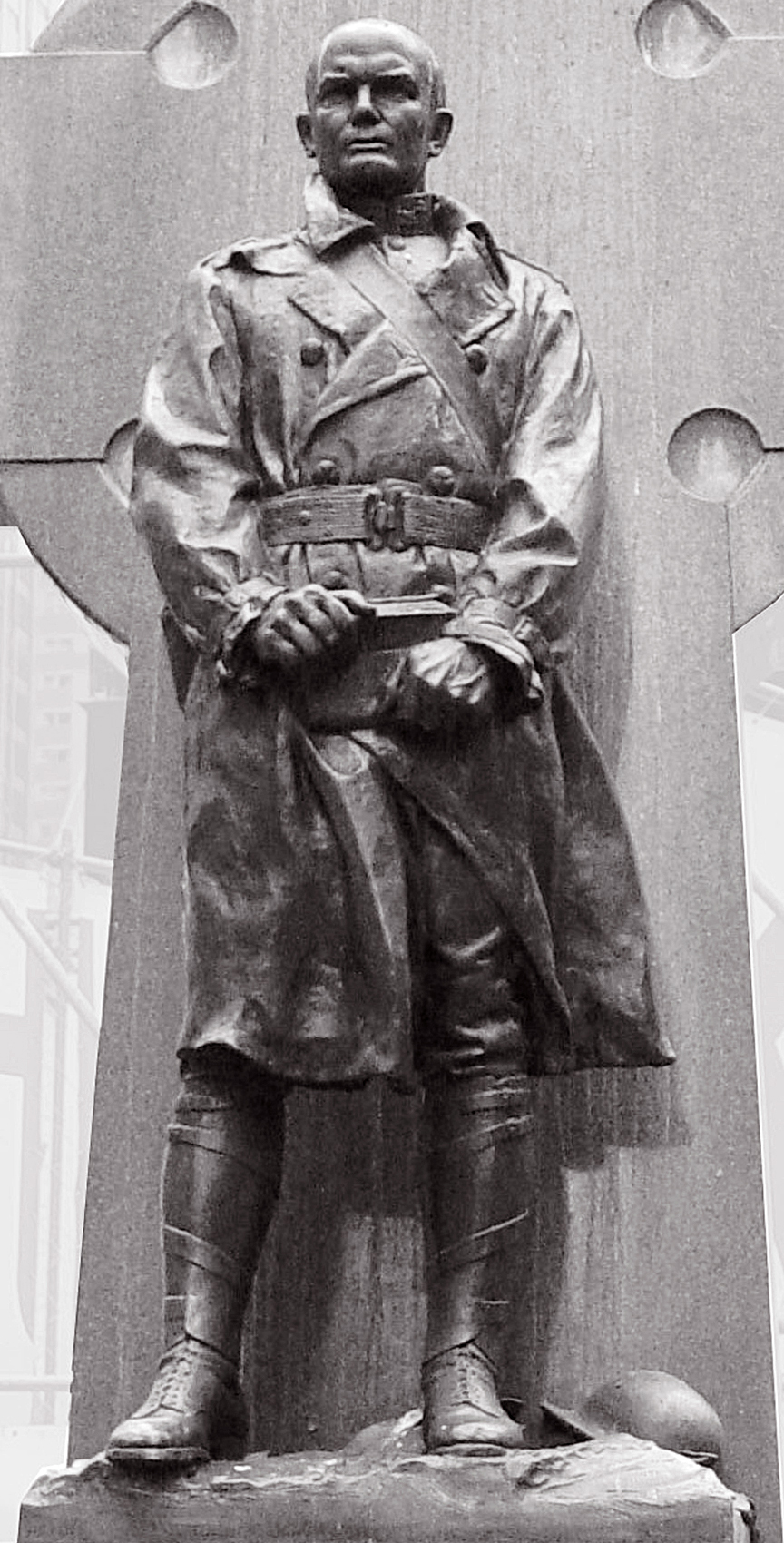
One of the men referred to was Francis Duffy (1871-1932), an American-Canadian Catholic priest of Irish descent; Duffy Square was named after him. He was a chaplain for the 165th US Infantry Regiment that fought on the Western Front in France during World War I. Duffy bravely followed US medic stretcher bearers into fearsome combat to rescue wounded US soldiers, he was the most decorated chaplain in US Army history.
The bronze statue of Duffy was created in 1937 by Charles Keck (1875-1951), an American sculptor from New York City. Keck was well known for his bronze monuments and architectural sculptures.
The other bronze “bookend” at Duffy Square depicts George M. Cohan, the American composer, lyricist, theatrical producer, and entertainer. Before WWI he was known as “the man who owned Broadway” because he had written and produced dozens of hit Broadway musicals.

Cohan gave the nation some 300 songs, like “Give My Regards to Broadway,” not to mention patriotic songs like “Over There,” “The Yankee Doodle Boy,” and “You’re a Grand Old Flag.” Even the Library of Congress presents his songs on it’s National Jukebox website. Listen to his 1911 song, Life’s A Funny Proposition After All, you’ll not find a more poignant song being sung today.
American sculptor Georg Lober created the bronze statue of Cohan in 1959. Lober also fashioned a larger than life-size sculptural portrait of Founding Father Thomas Paine. He was the author of Common Sense, the pamphlet published in 1776 that fanned the flames of the American Revolution.
A rhetorical question has been asked: “who should be rendered immortal through monumentalization?” Mr. Price answered with—”an anonymous, overgluttonous black woman!” Forget the US chaplain who put his life on the line to comfort dozens of wounded American soldiers dying in the bloody trenches of WWI. Never mind the American composer who left his music twinkling like stars on heaven’s vault. After all, they were only white men.
Mr. Price has no doubt pleased those in the politically correct “body positivity movement” who accept bodies of all sizes, rather than conform to societal ideals of beauty. There is this to say, however. The American Heart Association has said over 50% of black women in the US have cardiovascular disease, and physicians have long noted obesity is a major cause of heart disease. But pay no attention to medical science, just listen to Price. He knows all about “marginalized bodies.”
There are those who believe Grounded in the Stars represents the tired and wronged Black citizenry, who consequently are not compliant but instead are proud and defiant. I’m not about to argue with them. I imagine Price wants Blacks to view his sculpted obese woman as the epitome of the collective Black “us.” I trust many will embrace the notion.
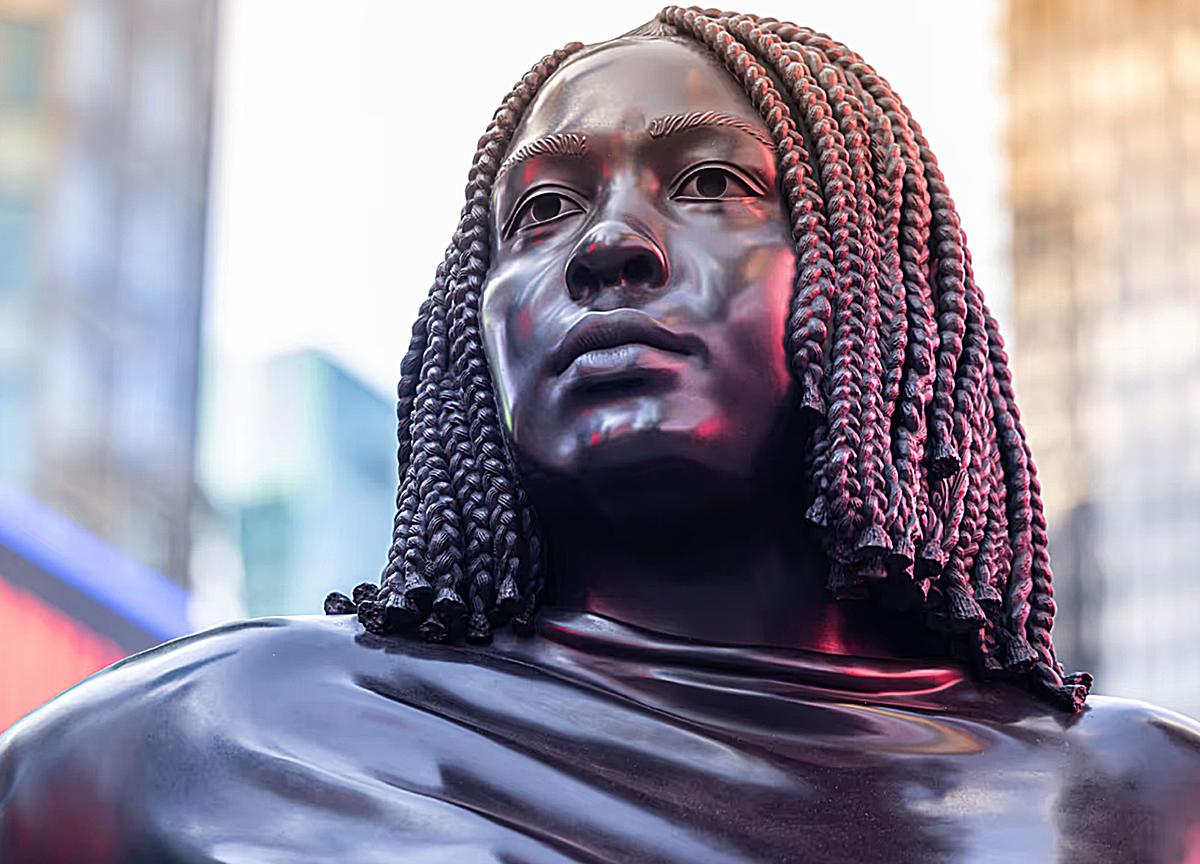
Then again, if you want to play the agitprop game with statuary, hoping to initiate a transformative social movement with an artwork that depicts an annoyed looking, famine resistant Black woman, you better reconceptualize your strategy.
Think of all the heroic, larger-than-life sculptures from throughout time and across cultures. Those statues rallied, inspired, and united people—that’s why ruling elites commissioned them. Exactly what did the “fictionalized” Black woman in Grounded accomplish, and why was this anonymous person worthy of monumentalization?
As artists, why can’t we create artworks that promote our nation’s unity. Is it wrong to imagine walking around New York City’s Times Square, to discover a bronze statue of a beautiful, welcoming Black woman, her arms open wide in a gesture of warm-hearted graciousness?
The entire Grounded in the Stars debacle reminds me of Harrison Bergeron, the 1961 dystopian science fiction short story written by American writer Kurt Vonnegut. His tale of America in 2081 showed a society where radical amendments to the Constitution forbad anyone from being smarter, better-looking, or more physically able than anyone else.
Equality laws forced people with superior intelligence, looks, or skills, to wear handicaps that reduced them to below average. Intellectuals had to put on earphones that emitted harsh piercing sounds to stop them from thinking. Those who were good-looking had to slip on masks that made them look repulsive.
Price ought to stop reading the fawning reviews he receives in the press, and read through a copy of Vonnegut’s Harrison Bergeron instead. But then, everyone should read the cautionary tale. Go ahead, it won’t hurt… it’s a short short storyette.
I remember when art was genuine and it could take your breath away, a time when art represented high ideals, virtues, and moral authority. Grounded in the Stars doesn’t fit that description at all—and I say this as a working artist committed to figurative realism in art.
It wasn’t that long ago that great artworks were being made. A few eminent works are still created today, but society largely ignores them in favor of the glitzy, glamorous, and mundane. It’s time for a resurgence in the arts and the creation of a 21st Century Renaissance.
Then we can all truly be grounded in the stars.



